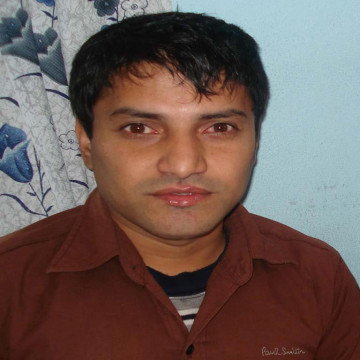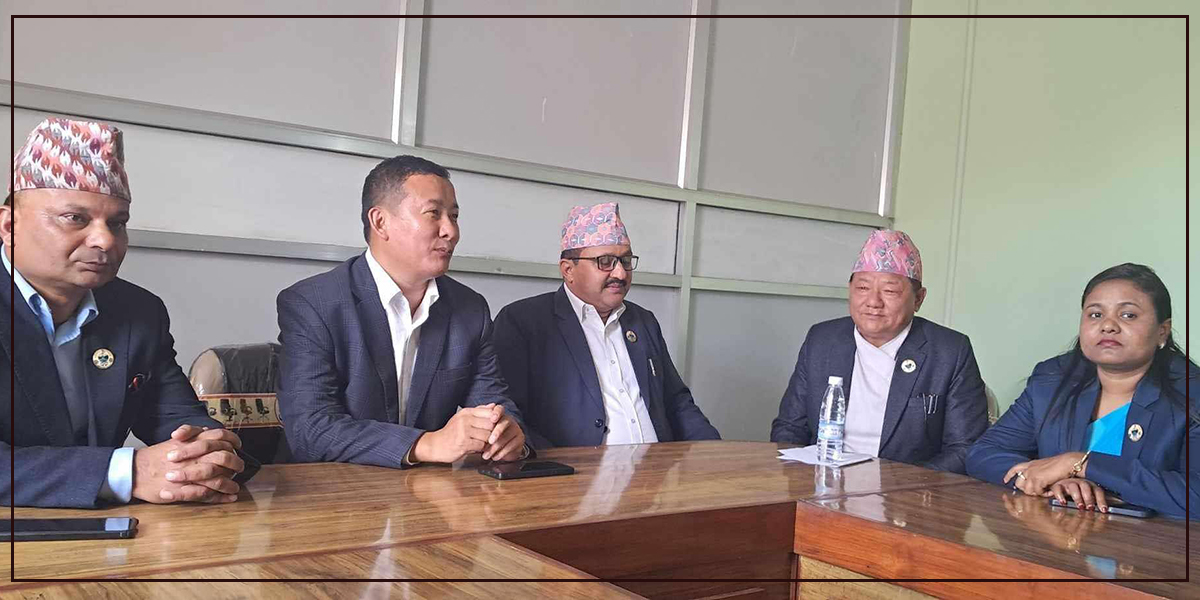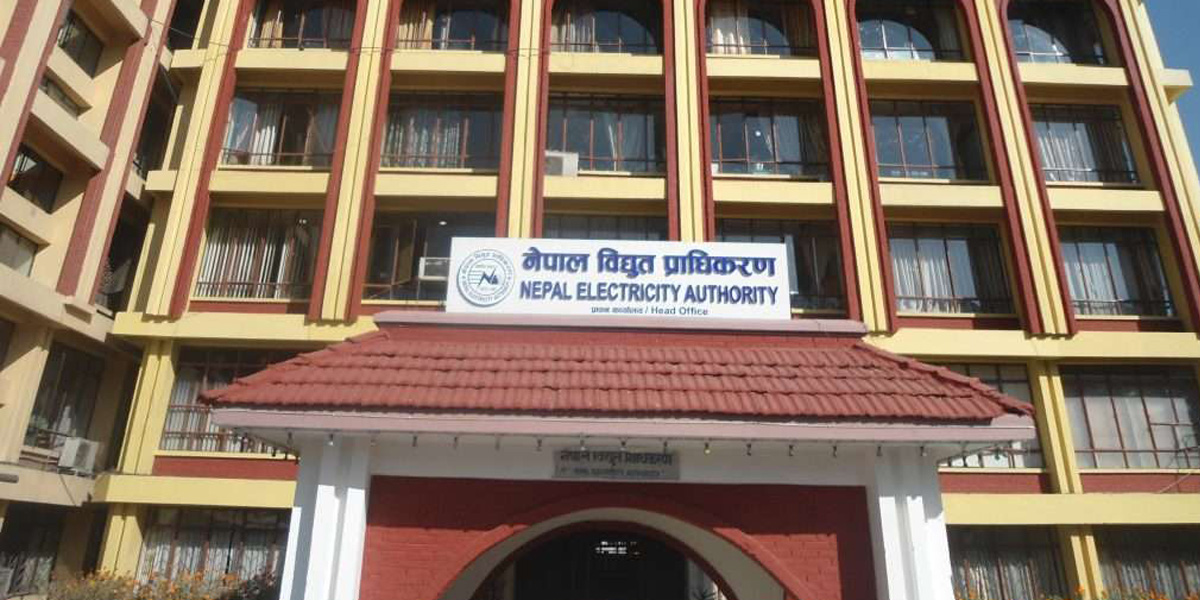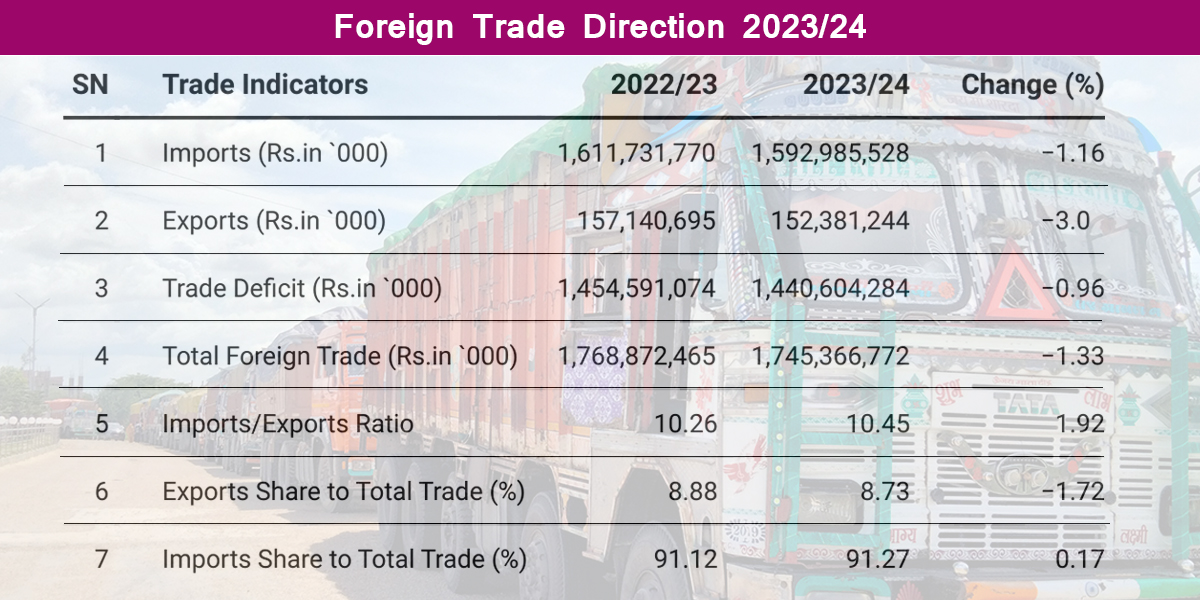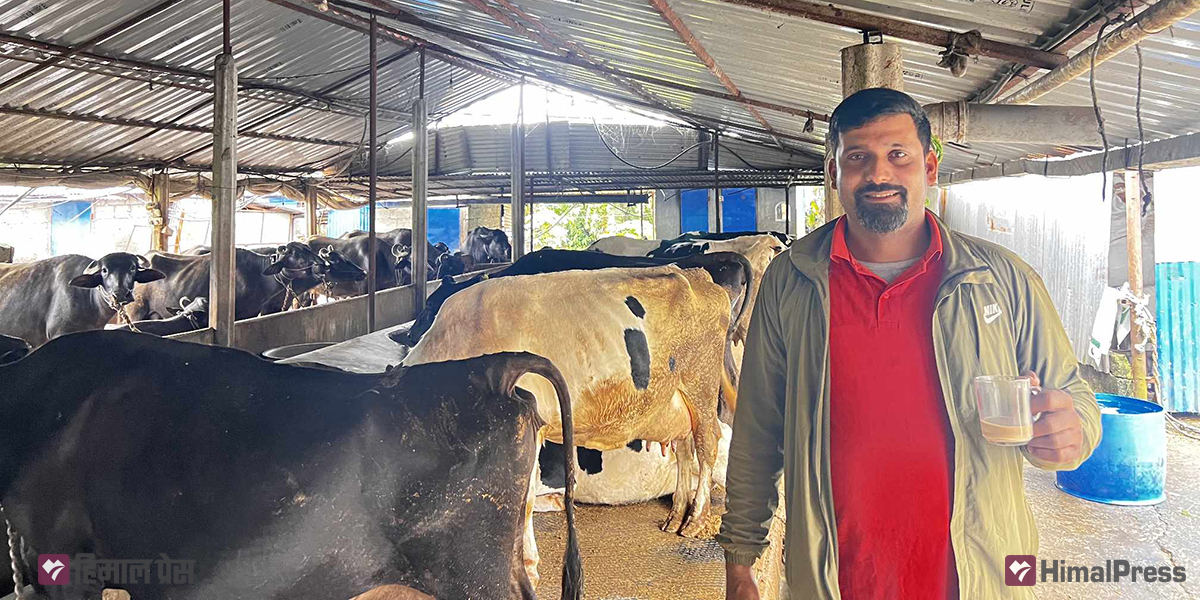
POKHARA: Ghanashyam Timilsina of Hemja, Kaski, embarked on a journey of foreign employment at the tender age of 20. Over the course of nine years, he toiled across various countries, including Saudi Arabia, Malaysia, and Qatar. However, a growing desire to contribute to his homeland led him to return. Today, at 41 years old, Ghanashyam is the proud owner of the largest cow farm in Kaski.
His remarkable journey began with an initial investment of Rs 3.5 million in Hemja Cow Farm Pvt Ltd, a sum that has now grown to Rs 100 million. He has 200 cows, 60 water buffaloes, and 40 goats on the farm. In addition, he cultivates tomatoes in 55 tunnels on his farm. His monthly income is around Rs 1 million. The farm also supplies seasonal vegetables to various markets in Pokhara.
Despite being the owner of the largest cow farm in the district, Ghanashyam actively involves himself in the framework. He wakes up at 3 am and engages in tasks such as milking cows, tending to crops, and overseeing the farm’s overall management. His motto is clear: “There’s no need to go abroad if you work with dedication.”
Ghanshyam, who ventured into foreign job destinations due to a lack of employment opportunities at home, has recruited local youths in his farm. Currently, his farm directly employs 25 young individuals. “I started dairy farming to inspire youths to work in Nepal itself,” he added.
The young farmer initially ventured into dairy farming 15 years ago in partnership with Madhu Tripathi. The duo established their farm at Persang in Pokhara-5. Of the Rs 5 million total investment, Ghanashyam contributed Rs 2.3 million. Despite its location in the heart of Pokhara’s main market area, the farm, known for selling unadulterated milk, quickly gained the trust of consumers. “At that time, a single cow would cost up to Rs 100,000,” Ghanashyam recalls.
Ghanashyam and Madhu sourced cross-breeds of Jersey and Holstein cows from farms in Ilam, Jhapa, and Chitwan. They initially employed three workers in the farm. Their dedication and commitment created a market for direct farm milk sales, inspiring a wave of budding dairy farmers in Pokhara and its surroundings.

After approximately four years, Madhu left for the United States, and Ghanashyam became the sole owner of the farm. He relocated the farm to Hemja and acquired two ropanis of land for expansion. Additionally, he leased 150 ropanis of land to grow fodder for the animals, as well as tomatoes and seasonal vegetables. The annual rent for the leased land is Rs 2.7 million, he added.
Ghanashyam said the rising cost of animal feed and cattle maintenance is becoming challenging for dairy farmers. “In the past, a 50-kg bag of feed was available at Rs 1,200; now, a 35-kg bag costs Rs 2,000,” he laments. “Likewise, we have to pay as high as Rs 1,000 for a 40 kg bag of paddy straw.”
The exemplary dairy farmer also raises Boer goats in the farm. Each Boer goat, known for its high-quality meat, is valued at approximately Rs 50,000. This season, 50 cows on his farm are expected to deliver calves. “This will lead to increased milk output which will help me financially,” he added.
Ghanashyam states that finding a market for his products has never posed a problem. He operates a sales counter near his farm, and if needed, the produce easily finds buyers in Pokhara.
In the future, Ghanashyam plans to further expand his farm and adopt organic farming practices. His astounding success has earned him numerous accolades, including a medal from President Ram Chandra Poudel and a cash prize of NPR 50,000 as the ‘Best Farmer’ from the Gandaki Province Government.
Observing the growing exodus of Nepali youth seeking employment abroad, Ghanashyam advises them to invest their hard work in their homeland, reiterating that dedication and perseverance can yield rewards anywhere. He also called on the government to support and incentivize youth engagement in the agriculture sector, offering attractive packages and subsidized loans to curb the migration of young talent to foreign job markets.

